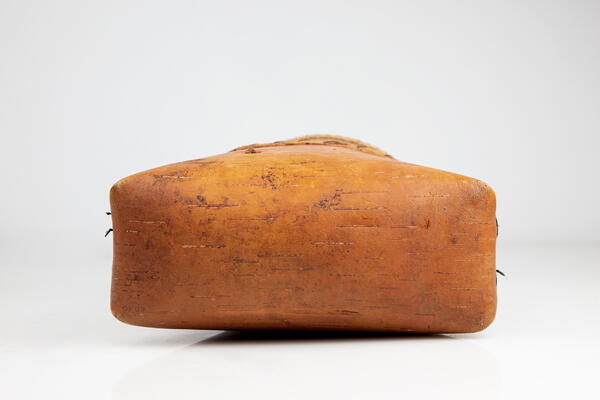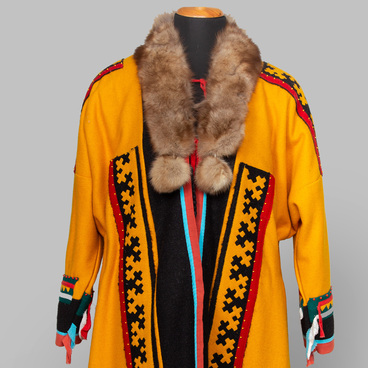Household utensils are an important part of the material culture of the people, which helps to understand their history and way of life. Nenets household items are adapted for nomadic life. The Nenets did not engage in pottery — they used affordable and durable wooden utensils. The Nenets also used the top layer of birch bark to make dishes, spoons, containers and boxes.
The Nenets carved spoons from different types of wood, depending on their purpose. The spoons differed in the length of the handle and the depth of the cavity. The scoop for fish and meat was up to 60 cm long, which made it possible to stir food while cooking in a large cauldron over a fire. The spoon for collecting fat was half as long, but four times as deep.
The Nenets used large trays and dishes to store meat and fish. Boiled fish or meat was put on a large wooden dish in the shape of a boat with a flat bottom. The dish was usually 25 cm wide and 50 cm long. It was handy and very stable.
Many peoples have long stored drinks and food in birch bark containers. Birch bark is naturally antibacterial, it is waterproof, but it allows air circulation. Products in birch bark boxes retain their temperature and stay fresh for a long time. People take birch bark containers when they go to pick berries: cloudberries, cranberries, lingonberries, blueberries, and bilberries. The northerners use berries to make drinks, teas, kissels (viscous fruit drinks), and jam. They also serve them with fish and meat. For future use, the berries are dried, preserved and pickled.
Among the Nenets, women have always been engaged in harvesting birch bark and making dishes. The collected birch bark was soaked in hot water so that the dry brittle bark became soft and elastic. Small utensils were made from raw birch bark that had been kept in dewy grass. If large pieces of birch bark were needed, they were sewn from separate parts with tendon threads.
When Russian settlers came to Yamal, wooden utensils gradually began to fall out of use, enameled and plastic containers appeared instead. Traditional scoops were replaced with ladles, wooden spoons with metal ones, teapots with thermoses. Birch bark containers are still used by the Nenets, and this tradition is returning to Russian everyday life as well.
The Nenets carved spoons from different types of wood, depending on their purpose. The spoons differed in the length of the handle and the depth of the cavity. The scoop for fish and meat was up to 60 cm long, which made it possible to stir food while cooking in a large cauldron over a fire. The spoon for collecting fat was half as long, but four times as deep.
The Nenets used large trays and dishes to store meat and fish. Boiled fish or meat was put on a large wooden dish in the shape of a boat with a flat bottom. The dish was usually 25 cm wide and 50 cm long. It was handy and very stable.
Many peoples have long stored drinks and food in birch bark containers. Birch bark is naturally antibacterial, it is waterproof, but it allows air circulation. Products in birch bark boxes retain their temperature and stay fresh for a long time. People take birch bark containers when they go to pick berries: cloudberries, cranberries, lingonberries, blueberries, and bilberries. The northerners use berries to make drinks, teas, kissels (viscous fruit drinks), and jam. They also serve them with fish and meat. For future use, the berries are dried, preserved and pickled.
Among the Nenets, women have always been engaged in harvesting birch bark and making dishes. The collected birch bark was soaked in hot water so that the dry brittle bark became soft and elastic. Small utensils were made from raw birch bark that had been kept in dewy grass. If large pieces of birch bark were needed, they were sewn from separate parts with tendon threads.
When Russian settlers came to Yamal, wooden utensils gradually began to fall out of use, enameled and plastic containers appeared instead. Traditional scoops were replaced with ladles, wooden spoons with metal ones, teapots with thermoses. Birch bark containers are still used by the Nenets, and this tradition is returning to Russian everyday life as well.





